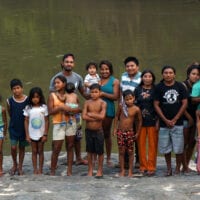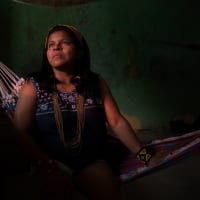Indigenous Peoples are those descended from the earliest inhabitants of a country before colonisation, who live in culturally distinct societies and communities.
The term ‘Peoples’ recognises the differences between Indigenous ethnicities, such as the different First Nations of Canada or Australia, or Native American tribes in the US.
There are approximately 476 million people who self-identify as Indigenous worldwide, less than 5% of the world’s population. There are Indigenous Peoples all across the Americas, Asia, India, Africa, Australasia, Northern Europe, the Middle East and Russia.
As the earliest known inhabitants of an area, Indigenous Peoples often have a close and even spiritual connection with their land and environment. The UN estimates that the land that Indigenous Peoples live on is home to 80% of the world’s remaining biodiversity.
Indigenous Peoples often have unparalleled knowledge of how to look after nature, and how to use natural resources sustainably. This comes from generations living within particular lands and native wildlife dating back centuries, or even millennia.
Colonial invasion and settlement subjected Indigenous Peoples to often brutal systems of oppression and deadly diseases. Colonisers also brought unsustainable farming practices – like cattle rearing and single-crop plantations like cotton and sugarcane.
Protecting Indigenous land is the most effective form of conservation
Despite the continued disruption of violent colonialism worldwide, Indigenous land protection is the most effective form of conservation.
- In Canada, Australia and Brazil, land where Indigenous Peoples live is better preserved than government-protected areas like parks and wildlife reserves.
- In mountainous places like the Andes in South America, Indigenous knowledge is proving essential in the ability to measure the impacts of climate change, and develop adaptation strategies.
- In the US and Australia, governments are coming around to the idea that ancient Indigenous fire-management practices may hold the key to preventing devastating fires that destroy millions of acres of land.


